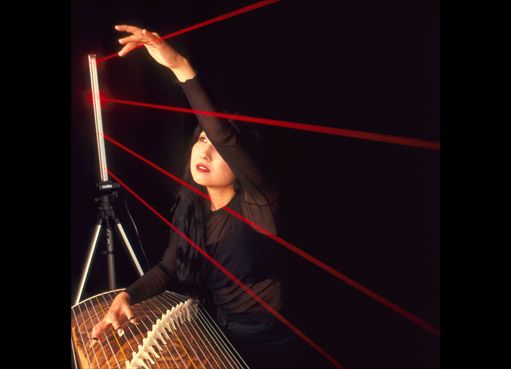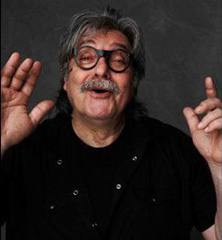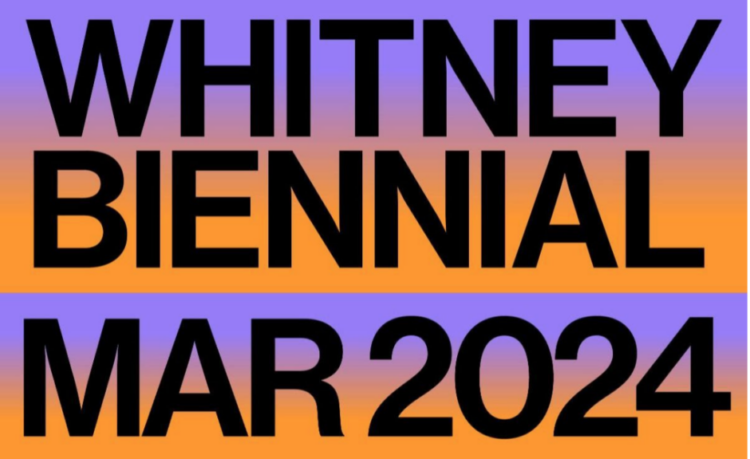The 2013 Doris Duke Artists on Facing Creative Challenges

Miya Masaoka, one of the 2013 Doris Duke Artists
What challenges do U.S. performing artists face?
In order to better get to know the extraordinary class of 2013 Doris Duke Artists, we asked them, among other things, about the biggest creative challenges they face as artists. Their answers were remarkably open, thoughtful and inspiring.
For example, Stacy Klein, Founder & Artistic Director of Double Edge Theatre, describes ongoing challenges that she proudly overcame during the creation of her most recent work, The Grand Parade (of the 20th Century): “Struggling determinedly to develop this work over the past two years according to my own criteria, and not the maddening voices of presenters, critics and fashion arbiters, I found the route to my own narrative and identity—visual, emotional, personal, female and American.”
Jazz pianist and composer Myra Melford cited a similar battle to achieve her personal vision: “My life’s work is about going as deeply as I can into the creation of my own music and the cultivation of my own voice… I strive to make all of my musical and life experience coherent internally.”
Pavol Liska of Nature Theater of Oklahoma wrote, “Every day, I fight for what I do to be central to public discourse. However, if I want the world to see my relevance, I myself have to be able to see it first. Unfortunately, it is not always easy. I live in a perpetual existential crisis regarding the meaning and purpose of what I have chosen to do with my life.”

John Malpede, Los Angeles Poverty Department (LAPD)
John Malpede, who founded Los Angeles Poverty Department (LAPD)—the first performance group in the nation comprised primarily of homeless and formerly homeless people—calls his two biggest creative contenders “So what?” and “Who Cares?” He is able to conquer them because “The human interactions that take place in the process of making work temporarily dispel these questions. The best ideas are ones that turn out to be good because they resonate in the chosen location and context.”
We’ve heard from multiple artists that facing “the unknown” is a perpetual challenge, but simultaneously an essential part of their work.
As playwright and interdisciplinary artist Lisa D’Amour puts it, “I have to be clear about what I am reaching for, and at the same time admit my complete ignorance as I wander into the dark room and start fumbling around for the light.”
Miya Masaoka, who creates work for solo koto, live electronics and video, describes facing the unknown: “It’s scary, but exhilarating, to go to that blank space, that free-fall, where new ideas, new inquiries, can find form and be explored and delineated. Sometimes, it feels like you’re in a dark pit, and there is no way forward, no way out… And then, boom, something happens, and it’s working… the world is full of light again.”
 And finally, David Gordon, with more than 50 years of work that challenges our perceptions of what a dance or theatre piece can be, poetically stated how integral the unknown is to his provocative work:
And finally, David Gordon, with more than 50 years of work that challenges our perceptions of what a dance or theatre piece can be, poetically stated how integral the unknown is to his provocative work:
“So, when I begin to use text and movement in my work,
all I always want to do is to never repeat myself
and to avoid repertory and pigeon holing
and to keep making work I don’t know how to make
and to always keep making something new
and to always be frightening myself
and I’m still working
and I’m still scared.”
These artists’ hurdles and triumphs are central to our program; the Doris Duke Performing Awards were designed after the Doris Duke Charitable Foundation’s careful inquiry into the challenges artists are facing revealed a need for flexible support that goes directly to individuals, not tied to any particular project, in order to allow for expanded freedom to take creative risks, explore new ideas, and pay for important professional and personal needs. The first tier of the program, the Doris Duke Artist Award, is therefore structured as an unrestricted, multi-year cash grant of $225,000, plus as much as $25,000 more for audience development and as much as $25,000 as an incentive for saving for “retirement” years. Through our partnership with Creative Capital, artists will receive the opportunity to take part in professional development activities, financial and legal counseling, and grantee gatherings—all designed to help them maximize the use of their grants and work toward more sustainable practices. Overall, the program aims to invest in, celebrate and empower some of the most vital performing artists working in the fields of jazz, theatre and contemporary dance.
So, while grant programs like ours strive to alleviate some of the financial (and therefore also time) strains on artists, there are so many intrinsic challenges to being an artist—many of which are vital to the art-making process and actually push forward creativity and vision. These answers were, for me, small revelations of just how powerful these creators are, and deepened my admiration of what they have accomplished. I am so looking forward to seeing where the 2013 Doris Duke Artists go, how they continue to push and prevail during their Award period. Learn more about the entire class on our website, ddpaa.org.
The Doris Duke Performing Artist Awards Programs is a partnership of the Doris Duke Charitable Foundation and Creative Capital.
